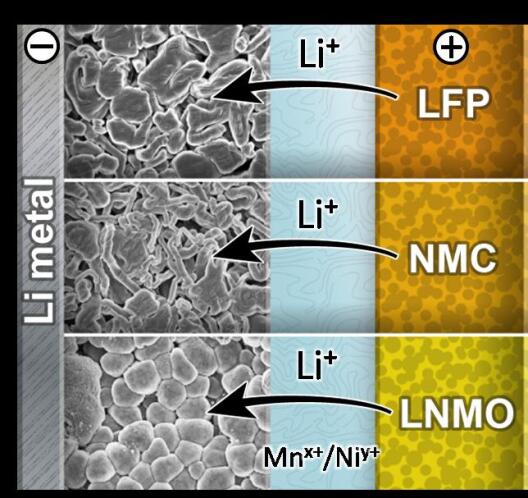Researchers discover influence of the cathode on the lithium metal anode
The demand for high-energy batteries, in particular for the automotive industry, is increasing, and with it the research interest in battery technologies, which could determine the future market. A promising technology are secondary lithium metal batteries (LMBs), which combine lithium metal as an anode with, for example, cathode materials containing lithium ions. However, the secondary lithium metal anode is still associated with safety problems related to uncontrolled lithium metal deposition (dendrites). As a result, the capacity of the cell can drop rapidly and, in the worst case, could lead to a short-circuit or even result in a thermal runaway.

Lithium metal batteries show high potential
However, due to the potential of LMBs, further research is conducted: Optimized LMBs tend to achieve higher specific energies and energy densities than lithium ion batteries. When high-energy cathode materials are used, these could even outperform future battery systems such as lithium║sulfur or lithium║oxygen in terms of their practical energy densities. So far, research on the electrochemical behavior of lithium metal anode has not shown the complete picture, because the influence of the transition metal cathode on the lithium metal anode is ignored or declared negligible.
Influence of cathode on anode proven
Researchers at the MEET Battery Research Center recognized the need for improvement: "A battery cell consists of many components that influence each other. If we optimize the anode without considering the interaction with the cathode, it will be difficult to exploit the actual potential of secondary lithium metal batteries," said Johannes Betz, MEET doctorand. Together with other researchers from MEET, Betz and his colleague Jan-Paul Brinkmann set themselves the task of demonstrating the influence of the cathode on the lithium metal anode. The curiosity of the scientists was rewarded. By using an elaborately coordinated mix of methods, they recognized that the cathode can indeed have a strong influence on the lithium metal anode. "With this result, we have taken a stand in the holistic approach to secondary lithium metal batteries," said Betz.
The study by Johannes Betz, Jan-Paul Brinkmann, Roman Nölle, Constantin Lürenbaum, Martin Kolek, Dr. Marian C. Stan, Prof. Dr. Martin Winter and Dr. Tobias Placke was published in the journal "Advanced Energy Materials".
DOI: 10.1002/aenm.201900574

